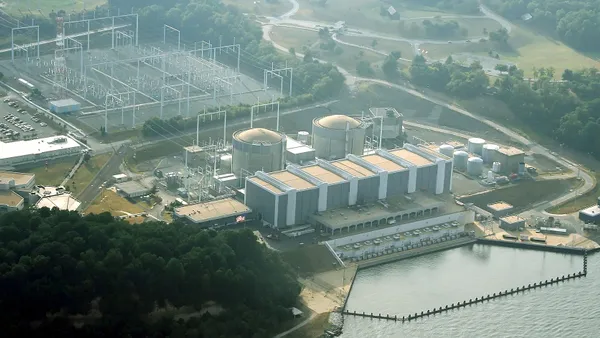Michelle Bloodworth is president and CEO of America’s Power.
Death, taxes and complaints about ISO/RTO markets are three of the most certain things in life. The Nov. 13 opinion piece in Utility Dive, “PJM sees ‘easy button’ to meet power needs, but Appalachians see higher bills and more pollution,” includes a number of complaints about PJM’s electricity market.
PJM held its periodic Base Residual Auction this summer to make sure its 13-state region has enough electric generating capacity to satisfy electricity demand during delivery year 2025-26 (June 1, 2025 – May 31, 2026). Power plant owners submit competitive bids based on what they are willing to accept to make sure their power plants will be available when needed. The purpose of this bidding process is to acquire capacity at the lowest cost.
The results of the auction made headlines because of the sky-high prices that electricity consumers in the PJM region will have to pay to ensure that enough electric generating capacity is available to keep the lights on. The cost of capacity increased from $2.2 billion in the previous year’s auction to $14.7 billion in this most recent auction, an increase of almost 570%. (The cost of capacity auctions over the prior ten years has varied from $2.2 billion to $10.9 billion.) Many experts think high capacity prices will continue in the future.
Several factors drove these record-setting capacity prices. The primary reason for the high capacity prices is an increase in electricity demand and a decrease in supply due to the retirement of existing generating capacity. New data centers are driving much of this demand growth because they require enormous amounts of highly reliable electricity to operate. Peak load projections for the PJM region increased by 3,000 MW since the last auction, but capacity bids were 6,600 MW lower than a year ago. Economics 101 teaches that prices increase when demand is high and supply is low. PJM’s latest capacity auction is a lesson in this simple principle.
Therefore, common sense suggests that we should increase the supply of electricity, yet the opposite is happening because coal-fired power plants continue to retire at an alarming pace. Over the next five years, electricity generators in PJM have announced plans to retire 19 coal-fired generating units totaling some 12,700 MW. For perspective, this is roughly equivalent to Maryland’s entire electricity supply. The PJM Market Monitor indicates that as much as 58,000 MW of PJM’s generating capacity, including coal, is at risk of retirement by 2030.
Nationwide, generators have announced plans to retire 133 coal-fired generating units totaling almost 60,000 MW over the same period. To make matters worse, EPA issued three new rules — carbon, wastewater, and mercury — earlier this year that will shut down even more coal plants, possibly the entire coal fleet. Because of the impact of these rules on the reliability of the grid and on the price of electricity, we expect the new administration to rethink these rules.
Some believe the best way to increase the supply of electricity is to add more wind farms, solar panels and battery storage to the grid. According to the PJM Market Monitor, “renewables can replace a significant amount of the energy output but cannot replace the capacity. The simple fact is that the sources of new capacity that could fully replace the retiring capacity have not been clearly identified.” Moreover, the large number of requests by renewables to connect to the grid has overwhelmed the existing interconnection process.
Regulators and grid operators have implemented reforms to the interconnection queue process, including but not limited to FERC Order 2023, but a recent report indicates that existing reforms will not fix the interconnection bottleneck. Echoing these sentiments, the CEO of a large utility said, “if people were to respond to yesterday's [capacity auction results] and say, yes, I think it's a good idea to invest in baseload dispatchable generation PJM, it would be six years before that capacity would come online.”
There are lots of ideas to address capacity shortages and more generally avoid grid reliability problems. Here are our ideas:
- Dispatchable generation should not retire until replacement capacity is in operation. Reliability-must-run agreements and 202(c) orders have serious drawbacks, so we have to develop better ways to keep generation operating.
- The replacement capacity should have at least the same accredited capacity and reliability attributes as the retiring capacity.
- Grid operators should identify and value all attributes that are necessary to maintain grid reliability. Besides making the grid more reliable through a market-based approach, valuing all attributes is likely to improve the economics of dispatchable generation and reduce the pressure to retire prematurely.
- Any transmission that is needed because of the retiring capacity or the replacement capacity should be built, simply not planned or under construction.
- EPA rules should be designed so as not to cause retirements of dispatchable generation.
The first law of holes says that you should stop digging when you’re in one. It’s time to stop retiring dispatchable resources if we don’t want the hole we’re in to get any deeper.














